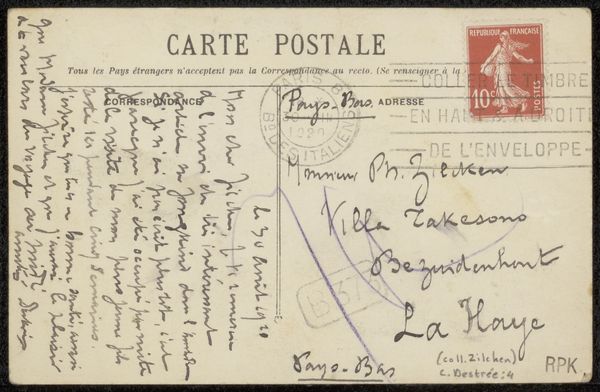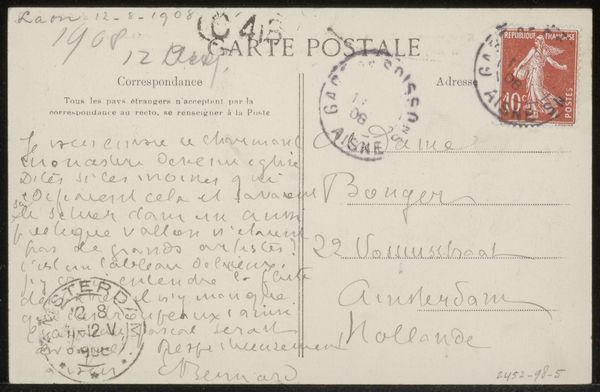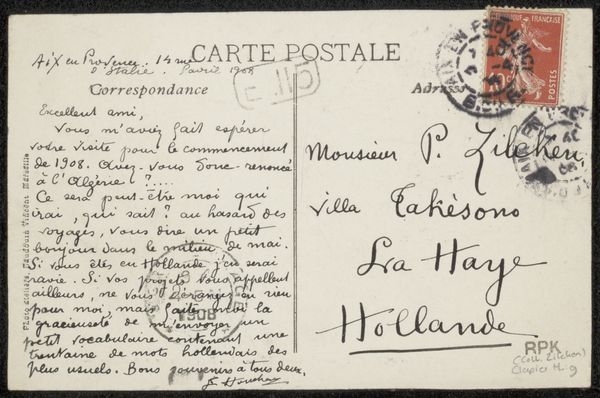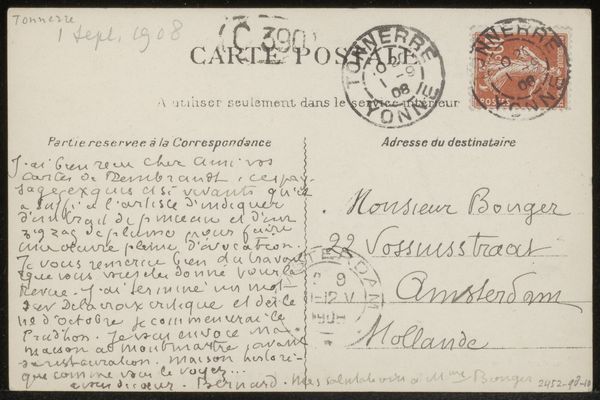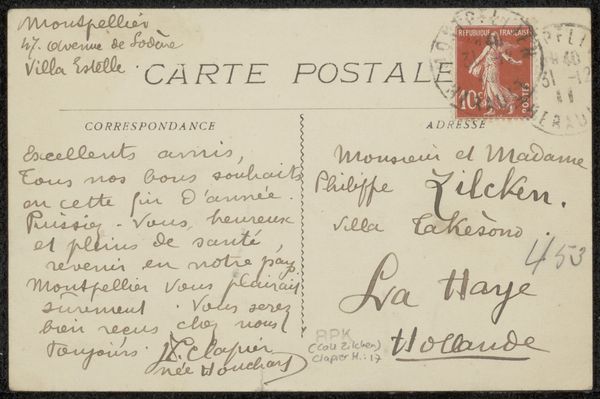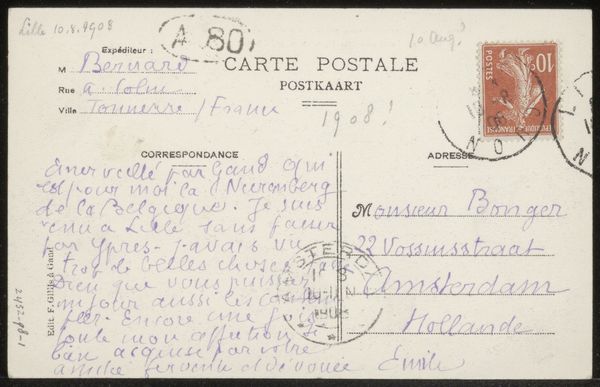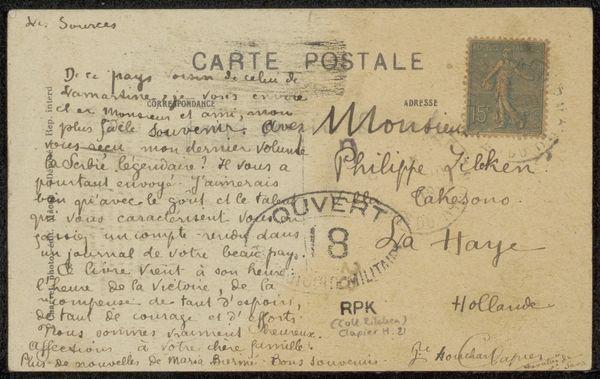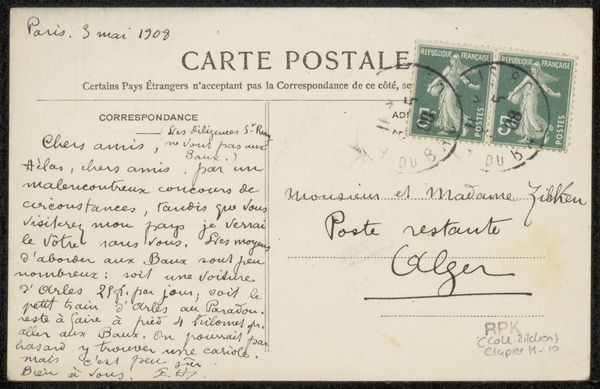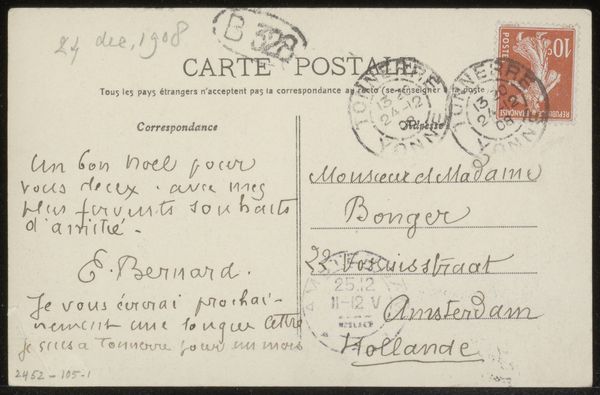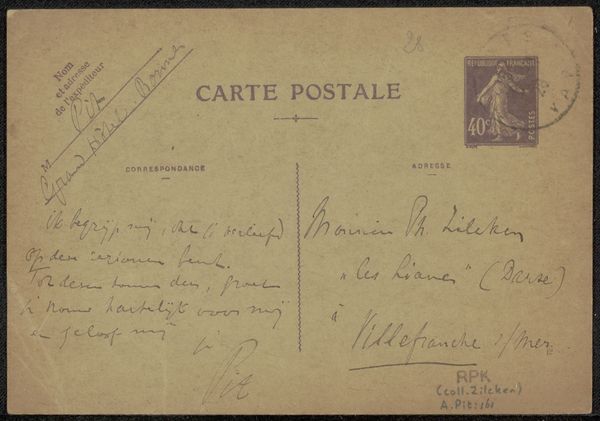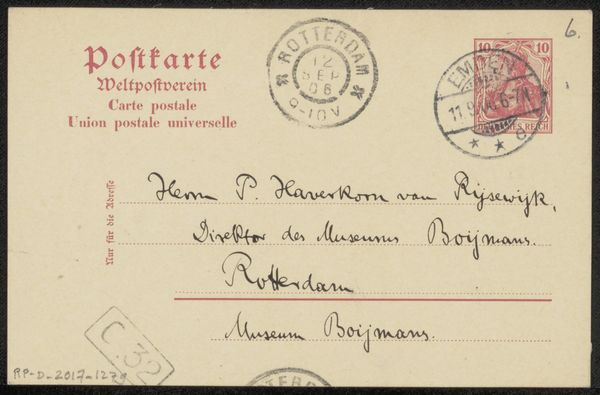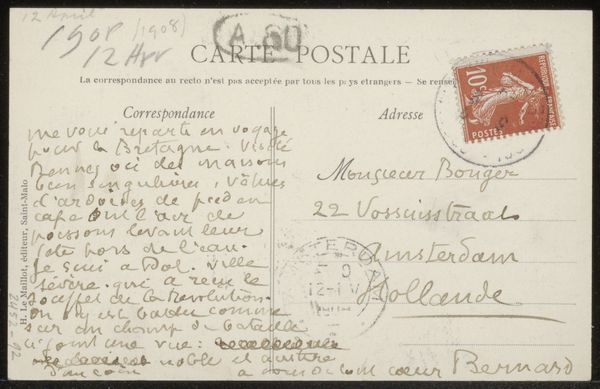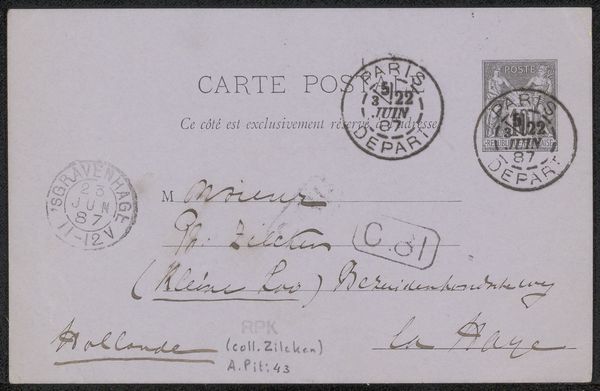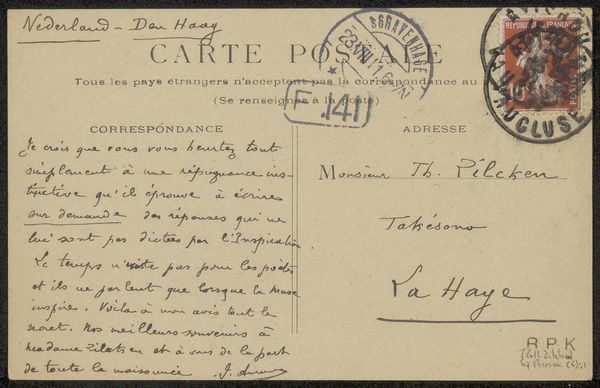
Copyright: Rijks Museum: Open Domain
Editor: We're looking at a postcard titled "Prentbriefkaart aan Andries Bonger" by Emile Bernard, likely made before 1922. It’s ink on paper, so a drawing rather than a painting. My initial impression is that it is less of a finished work, more like a peek into the artist's correspondence, but also quite beautiful. How do you read this intimate form of communication? Curator: Exactly! It’s more of a shared moment than a performance. Postcards, then and now, have a whisper of immediacy. This one feels wonderfully lived-in; like catching a glimpse of Bernard deep in thought, quill in hand, sending a quick missive to a friend. What do you make of the contrast between the formal printed postal markings and his own, very personal, hand-written script? Editor: It's like two worlds colliding! There’s this standardized official form battling with something really intimate and, well, flowing, especially in the handwriting. Curator: Precisely! Bernard's calligraphy – almost a drawing in itself – feels like a secret language layered onto the public declaration of "Carte Postale." He takes something meant for mass communication and twists it into a highly personalized form. The stamp, the postmarks—they’re all part of the composition, almost like collage elements in an intimate piece. Editor: So, even mundane things like stamps can actually contribute to a richer experience. It definitely gives me a lot to ponder about my own methods of communications today! Curator: They do! Everything has potential to inform how we perceive or wish to be perceived; like choosing between the swift message of an email versus putting pen to paper, sending a letter to a friend. And that reflection can also provide a great context in the art world!
Comments
No comments
Be the first to comment and join the conversation on the ultimate creative platform.
